Early May 2007
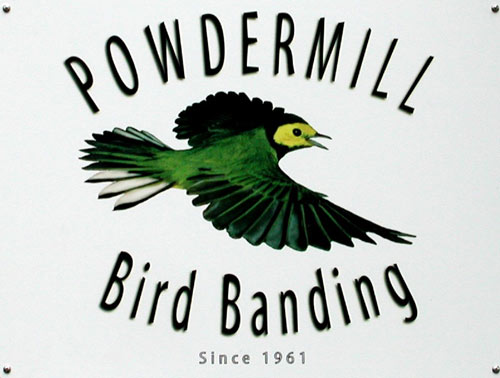
Through the first nine days of the month, 2,500 net hours of effort resulted in our banding a total of 646 birds of 60 species (26 birds per 100 net-hours); an additional 122 recaptures were processed. The best day was 8 May, when 122 birds of 35 species were banded; the capture rate of 30.5 birds/100 net-hours that day also is the highest recorded during the period. Top ten species so far in May are American Goldfinch (59 banded), Gray Catbird (58), Ruby-crowned Kinglet (46), Yellow Warbler (44), Rose-breasted Grosbeak (28), Common Yellowthroat (26), Swamp Sparrow (25), Blue Jay (23), White-throated Sparrow (22) and Nashville Warbler (21).
For their help with the banding in early May, many thanks go to volunteers Mary Shidel, Molly McDermott, Matt Shumar, Brent Worls, Lauren Schneider, Dean Thompson, Margaret Hahn, visiting bander Bruce Steger, Sara Sargent, Danilo Mejia, and Maria Paulino.

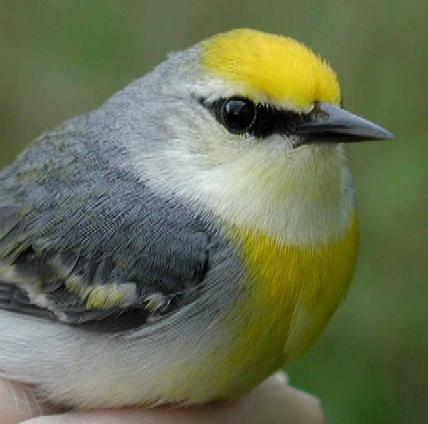
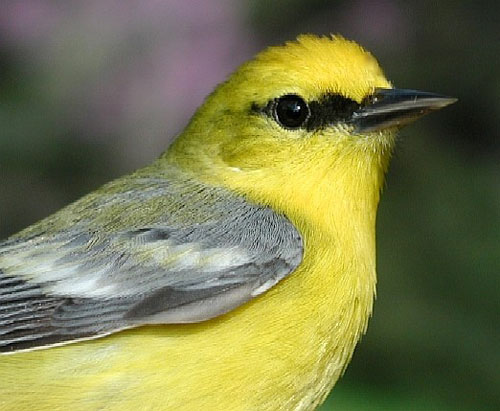
In the photos below, a male Golden-winged Warbler, banded on 3 May (top photo to your left) and a male Blue-winged Warbler banded on 2 May (bottom photo to your left) nicely frame the hybrid GWWA X BWWA male "Brewster's" Warbler (middle photo to your left) banded at the end of April. See also April highlights.
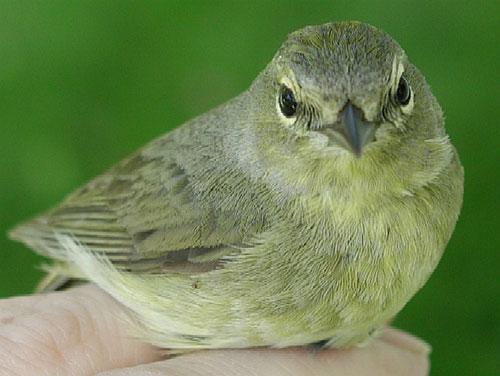
Almost as rare as the hybrid Vermivora above, especially in spring, is this ASY female Orange-crowned Warbler (Vermivora celata) banded on 8 May. This species was completely absent from our spring 2006 totals.
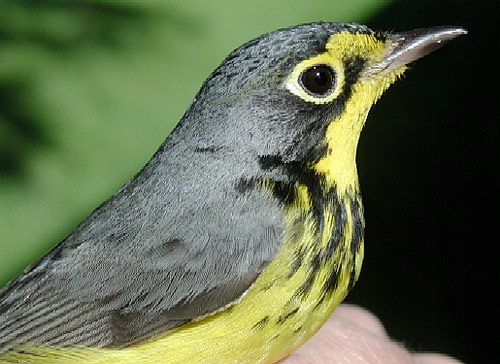
On 6 May, we banded this adult male Canada Warbler. When ageing warblers, in general, we look for a molt limit among the carpal and greater alula covert (also referred to as A1). However, birds with bluish-gray or greenish plumage tend to show much less obvious contrast in color, lustre, and wear between the retained juvenal and molted wing feathers. To further complicate things, worn adult feathers can look quite dull and brownish, especially in this species.
Fortunately, CAWAs are also a bit more unusual in that body plumage is rather distinguishable between the age/sex classes, particularly in the spring. As is the case with this bird, ASY males have the most extensive black in the face and heaviest black breast streaking.
While you can get a good intial impression of the age/sex of a bird based on outward plumage, remember, it is always best to verify that impression with a careful examination of the wing for molt limits!
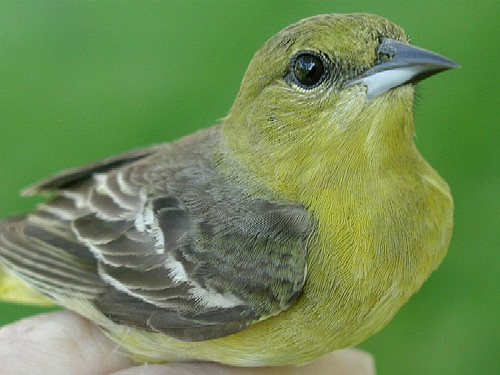
This ASY female Orchard Oriole was a "good get" for us as the long term average for this species in the spring is < 1.
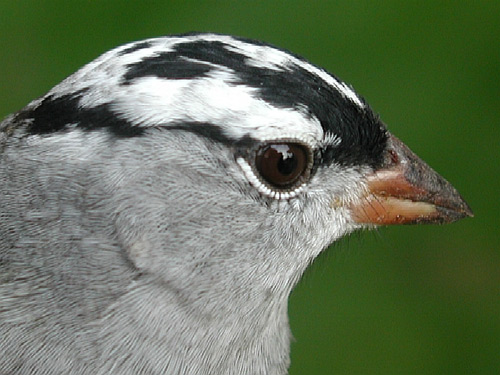
While it is an invasive weed, it grows principally in lawns and therefore does not compete with many other native plant species. We enjoy the brightness that dandelions add to the lawn here at Powdermill and never spray pesticides to be rid of them. But few also realize what a wonderful food source and attractant dandelions are to the many birds we enjoy observing during spring migration.
This White-crowned Sparrow, banded on 1 May, is proof positive that this bird, like many others, feed extensively on dandelions that are just setting seed this time of year. The "dirt" on the bird's beak is actually dandelion "latex" and we see this frequently on many other species as well, including, American Goldfinch, Chipping Sparrow, and Field Sparrow.
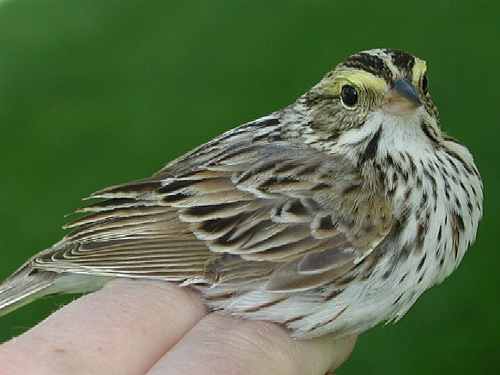
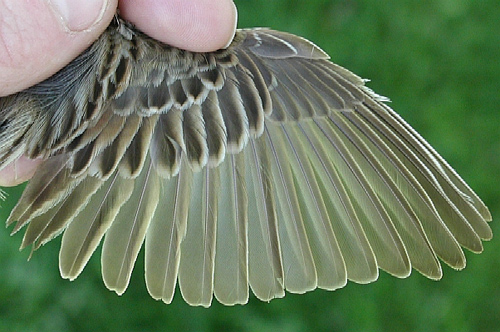
Because they are only rarely banded at Powdermill, where little or no suitable grassland habitat for them exists, Savannah Sparrows are always something of a surprise, albeit a pleasant one!
The photo of the bird's spread wing shows a comparatively un-extensive first prebasic molt, including only the lesser, median, and greater coverts of the wing, plus the carpal covert, making the age a clear SY.
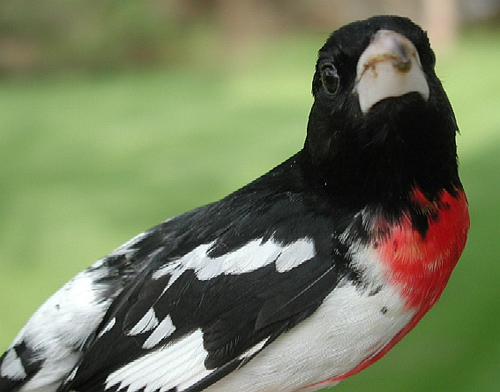
Rose-breasted Grosbeaks arrived to the banding area in large numbers this week and, already we've banded more than double the number we had by this time last year.
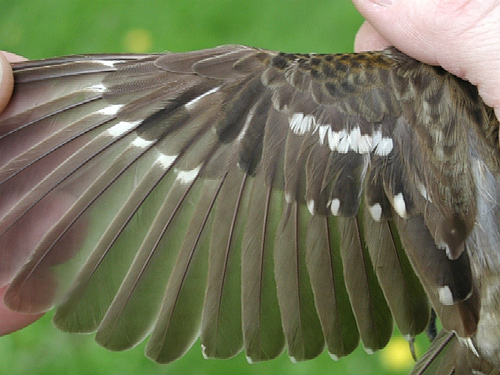
Among them was this unusual ASY female, who apparently had replaced a few greater coverts and one primary covert during her definitive prealternate molt. The replaced primary covert, in particular, is very black with a large white spot, like we might expect to see on a male RBGR.
During the week we banded 402 birds of 63 species--twelve species were new for the season, bringing to 96 the number of species banded since March 1. Magnolia Warbler (64 banded) was the commonest bird this week, followed by Gray Catbird (36), Common Yellowthroat (28), Ruby-throated Hummingbird (18), Swainson's Thrush (16), Indigo Bunting (16), American Goldfinch (156), Yellow warbler (15), Canada Warbler (13), and Nashville Warbler (11). Our best day May 10, when 100 birds of 36 species were banded.
We appreciate help from these visitors and volunteers during the week: Margaret Hahn, Cailin O'Connor, Joe Schreiber, Danilo Mejila, Maria Paulino, Mary Shidel, and Steve Latta.

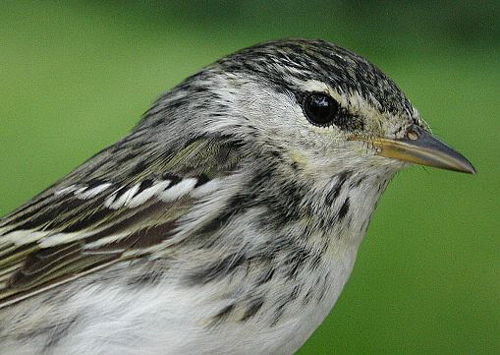
We banded our first Blackpoll Warblers of the season: an SY male on 5/10 (top photo to your left) and an ASY female on 5/16 (bottom photo to your left).
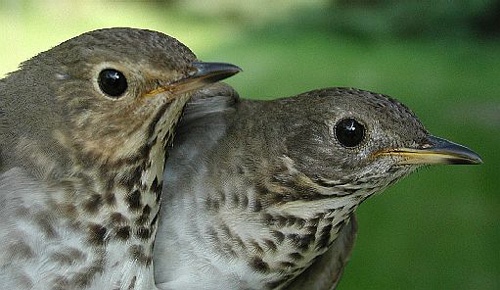
We banded our first Gray-cheeked Thrush on 5/15. In the photo to your left it is pictured on the right with one of two Swainson's Thrushes banded on the same day. Its gray cheek is especially evident when seen next to the buffy cheek (and buffy "spectacles") of a Swainson's; another difference between the species is the more strongly bi-colored lower mandible of the GCTH.
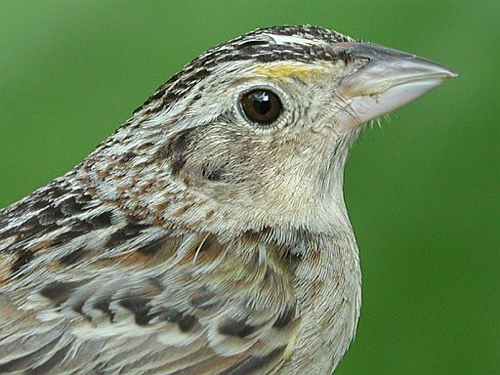
Despite the lack of any true grassland habitat in our banding area, we netted another species of grassland sparrow (recall that two Savannah Sparrows were banded last week), this Grasshopper Sparrow.
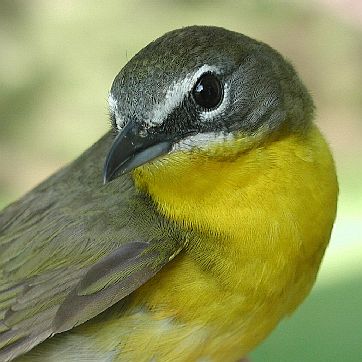
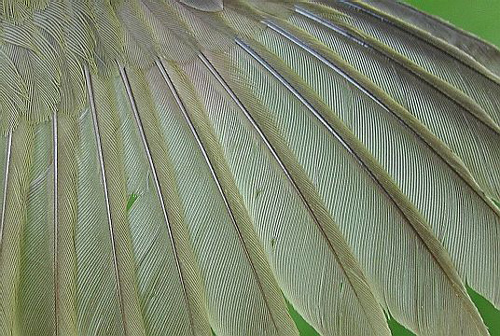
We banded an SY female Yellow-breasted Chat on 5/11. Sex was determined by her grayish rather than blackish cheek and less intensely yellow breast. Age was determined by the distinct molt limit between her outer five molted and inner four retained primaries (note the much darker shaft streaks on the molted primaries).
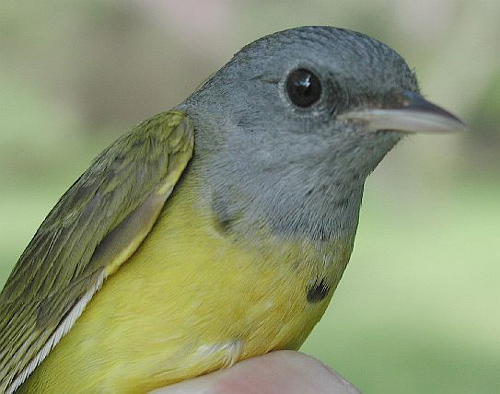
An ASY female Mourning Warbler banded on 5/10 was unusual because she had some black feathering in her throat and upper breast.
Had her age not been precisely known, she might have been confused as an SY male, although her wing length of 59.5mm fit much better within the range for females based on our morphometric analysis of 767 MOWAs (Mulvihill, Leberman, and Leppold. 2004. Relationships among body mass, fat, wing length, age, and sex for 170 species of birds banded at Powdermill Nature Reserve. EBBA Monograph No. 1).
